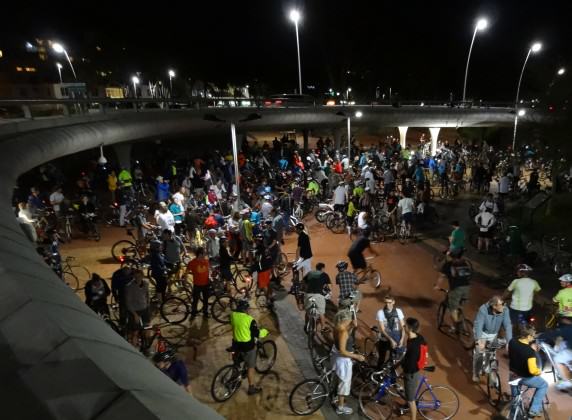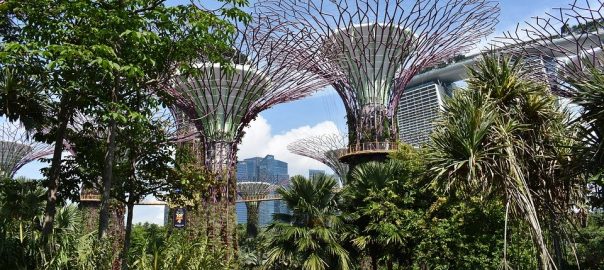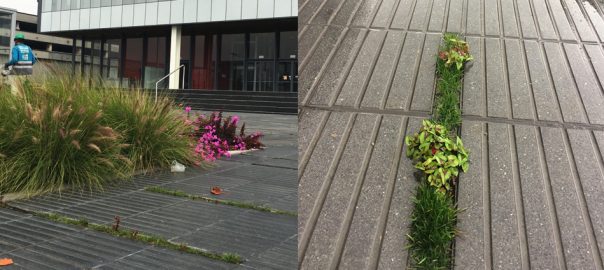Every time I see an adult on a bicycle I no longer despair for the future of the human race. —H.G. Wells
Fast, efficient and individualistic, the bicycle is no ordinary mode of transport. It’s a church, a gym, a community creator, a cash printer, a protest placard, a dopamine generator, a mechanical expression of self-determination, an icon of hope. It is touchable, attainable freedom.
It is also a tool for nature conservation and one that the City of Cape Town—indeed, any city—stands to benefit from.

My father is a boisterous character, half-man half-bicycle. Last month, he cracked two ribs after tumbling over his handlebars. I profited from his misfortune by taking his place in the world’s largest individually-timed cycle race, the Cape Argus. Egged on by minstrel bands and reels of cheering supporters, some donning fancy dress, I joined over 30,000 competitors to pedal 110 km around the breath-taking Cape Peninsula. The race is a magnificent celebration of sport, healthy living, unity and nature. It physically exposes and connects people to the region’s awe-inspiring natural beauty. The organizers are well aware of this, having furnished all finishing medals with images of iconic local species and the words, “Our Natural Heritage”.
The experience left me wondering whether bicycles could meaningfully contribute to nature conservation in a broader sense. The answer appears to be multifarious.
1. More bikes = more connectivity, awareness, compassion, and innovation
Exposure to nature nourishes the soul and fosters compassion for wildlife (and for fellow humans), especially in children. Urban citizens who never encounter wildlife, who never marvel at the complexity and fragility of nature, may feel indifferent to its plight.
By liberating green space and enhancing mobility, bicycles can reconnect people to nature and to each other. On a bicycle, one cannot turn up the music, wind up the windows, lock the doors and adopt tunnel vision. On a bicycle, one is exposed and alert to their surroundings. One is manoeuvrable, approachable and distractible. One can divert, slow and stop to examine oddities, follow intriguing scents, chat to curious strangers, explore unchartered streets, or just quietly observe wildlife.
With eyes and ears on the ground, cyclists feel a greater sense of place and a stronger connection to their neighbourhoods. Such interaction may ignite compassion for a city, its nature and people; inspire innovations for improving urban liveability; and instil the motivation to set about doing so. Certainly, cycling can render us happier, healthier, wealthier and calmer with more time and money to spare for community-centred activities including nature conservation.
Imagine:
- A community of cyclists, proactively interested in their city, its nature and its people.
- The ideas they will devise, develop and share, aimed at improving their city.

2. More bicycles = more space for nature
I recently visited a suburb of Johannesburg. Ecologically dull, aesthetically grim, traffic congested, socially segregated, it is dominated by roads, car parks and shopping complexes—a superb example of bad urban planning, a suburb designed for cars not people. Yet it resembles much of the modern world—a world that is rapidly transforming through low-density car-infatuated urban sprawl.
A bicycle consumes only a slither of the space that a car does, both in terms of lane width and storage/parking area.
Imagine:
- The potential for reducing traffic congestion by converting car drivers into cyclists.
- The projected urban sprawl that could be averted and the natural habitats that could be saved.
- The area of concrete and tarmac that could be reclaimed, liberated and transformed into ecologically-vibrant, socially-inclusive multifunctional public space.
3. More bicycles = less pollution, more resources
The life-cycle of vehicles and the road infrastructure that they necessitate is resource-ravenous and waste-flatulent. At the point of sale, a new car has already inflicted ecological damage globally not least through the extractive industries that support its manufacture. Regardless of manufacturing, conventional cars are woefully inefficient. Why do we need vehicles that are typically 25 times heavier than our own bodies? What a waste of natural resources! What needless environmental degradation!
Even if distant impacts are “out of sight, out of mind” then surely local impacts elicit concern. Vehicle emissions contribute to urban smog, impart respiratory illnesses and stain our lungs grey. Hydrocarbons, break fluids and other chemicals leak from cars poisoning our waterways. Noise pollution from traffic and road construction shakes the ground, awakens the sleeping and stresses the awake.
An average bicycle, on the other hand, produces comparatively negligible pollution. It weighs around one-sixth of our body weight and less than one-hundredth of an average car. It moves in silence, causing little disturbance to wildlife. Its full life-cycle impacts are dwarfed by those of a car.
Imagine:
- The potential reduction in air, noise and water pollution by converting car drivers into cyclists.
- The consequent enhancement of a city’s resource-efficiency and the reduction of its ecological footprint.
- The water, mineral and energy resources that could be saved.
4. More bikes = more environmental justice
Green infrastructure generates multiple ecosystem services that support human wellbeing including education, recreation, spiritual fulfilment, storm water absorption, climate regulation, and food production. In an increasingly urbanized world, maintaining direct access to such benefits is challenging. Communities may suffer ‘nature deficit disorder’ which hinders child-development and induces psychological ailments. You are not alone if you can identify the logos of obscure commercial brands better than common bird or tree species. Affordable, safe public transport is not always available for carless families wanting to visit green spaces beyond walking distance.
Bicycles can address such environmental injustice: (1) by alleviating road traffic to allow for the establishment of additional green space; and (2) by extending one’s radius of accessible area to encompass otherwise inaccessible ecosystem services.
Imagine:
- Establishing more equitably-distributed green space.
- Enhancing the mobility of carless citizens to enhance the accessibility of ecosystem services.
Love is a dangerous game
Despite the enormous enthusiasm for cycling, so palpable at the Cape Argus, only a tiny, albeit increasing, proportion of Cape Town’s inhabitants dare to cycle on a regular basis. Their reasons appear multifarious yet rooted in fear: fear of colliding with reckless drivers (taxis deserve a special mention here for frequently endangering the lives of cyclists); fear of exposure to violent crime; fear of inhaling noxious traffic fumes; fear of arriving sweaty at work; and fear of being stigmatized.
These fears are legitimate, but all can be overcome. Local movements like the monthly Moonlight Mass and the annual Naked Bike Ride are helping to raise awareness of cycling in the city. For over a decade, NGOs like the Bicycle Empowerment Network have been addressing poverty and mobility through the promotion of cycling in low-income communities. However, the keys to a more bicycle-friendly city that reaps the aforementioned social and ecological benefits, lie primarily in the hands of the local government.

The City of Cape Town will become the 2014 World Design Capital presenting unprecedented opportunities to support urban initiatives fostering social and environmental progress; an opportunity to deploy the bicycle as an agent of urban transformation and as a catalyst for nature conservation.
To achieve this, the local government must:
- Strengthen the protection of cyclists, better inform drivers, and enforce road safety;
- Expand the network of formal cycle lanes and allow bicycles on board public transport;
- Improve street lighting and tighten security to reduce crime;
- Improve air quality by taking meaningful measures to reduce traffic congestion;
- Launch a well-framed public campaign to promote cycling;
- Incentivize employers to provide showers in the work place;
- Identify and pedestrianize priority roads (e.g. Long Street and sections of Main Road).
By embracing the bicycle and its associated benefits, Cape Town will truly stand apart as a forward-looking, innovative city designed not for its cars, but for its people and the nature that underpins their wellbeing and prosperity.
Russell Galt
Cape Town







Leave a Reply